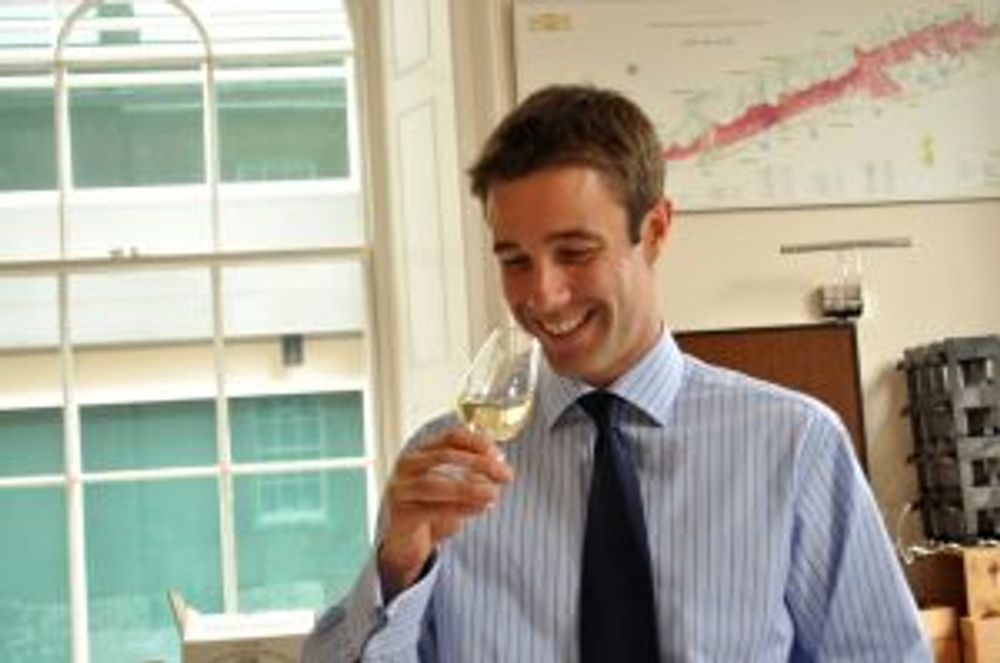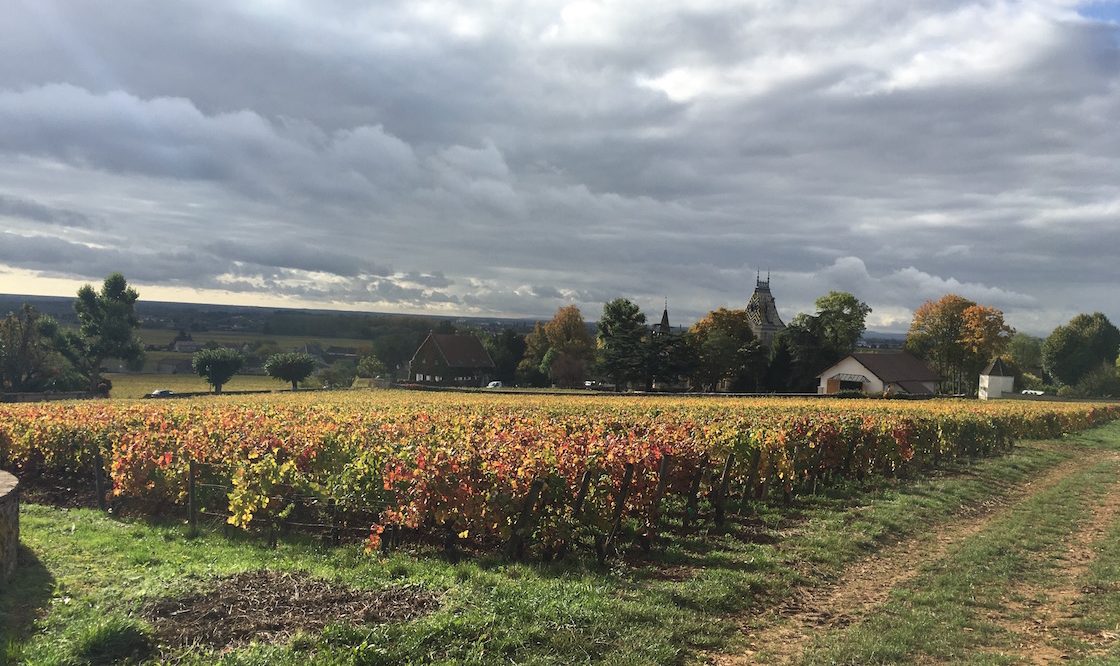Quantities of Burgundy 2016 for some regions like Chassagne-Montrachet and Chambertin are lowest on record due to frost action early in the vintage. But there is no quibbling about how good the quality of the wines are.

Guy Seddon, Corney & Barrow’s senior fine wine buyer/ sales
Following a visit in September 2016, I wrote: “Burgundy 2016 is still on the vine, but the crop has been severely reduced by frost and then mildew. Losses range from around a third to the point where you wonder if it is worth sending in the pickers at all. And all this without hail in the Côte d’Or so far (touch wood). What fruit remains is healthy and the weather looks set to remain warm and sunny throughout September (touch wood again). Very fraught vintage in Chablis, which was hailed badly once more (on the 31st May).”
The good news is that no hail materialised in the Côte d’Or and the weather throughout September continued fine and sunny. The first proper rains started on Saturday 1st October, by which time all but the final vestiges of the harvest were in.
A very good vintage has been salvaged from the jaws of disaster. But the quantities…
The Great Frost of 2016
What exactly happened on the devastating night of 26th-27th April 2016?
Temperatures dropped to zero, causing the nascent buds to freeze on the vine. The sun then rose in a clear blue sky. Before the frozen buds had a chance to thaw, the solar rays used them as tiny magnifying glasses, frazzling their delicate contents. As flies to wanton boys…
Due to the angle of the rising sun, in some places the higher plots (typically the premiers and grands crus) were worse affected than the village sites lower on the slope. This was far from clear-cut, however.

After the harvest, October 2016
In the Côte de Nuits, Chambolle-Musigny was badly hit, as was Clos de Vougeot and Echézeaux, but Morey Saint-Denis was largely spared. The Côte de Beaune’s northern and southern extremities – Corton and Puligny-Montrachet – escaped, whereas Beaune, Pommard, Volnay and Meursault suffered terribly.
Much hope was placed on a second growth of buds. However, as Clive Coates MW has written, “As far as a second generation is concerned, this is elusive. One grower was heard joking to his team: by all means come back and help me pick, but not until the 18th of November.”
And so?
How do you follow the white wine majesty of 2014 and the red wine panache of 2015?
Alongside the exuberance of 2015, the Burgundy 2016 vintage is cut from more traditional cloth. Certainly more Savile Row than Vivienne Westwood. The whites do bear a resemblance to 2014 and 2010 – we are in the happy middle kingdom of stone- and orchard-fruit, rather than 2015’s ebullience or 2013’s citric pucker.
If pushed, I think the reds will turn out to be the great success story of the vintage – there is a brightness and luminosity, combined every now and then with a weightless thrill – that fairground lurch in your stomach, the electric connection to a higher plane.
Will the prices of the Burgundy 2016 be high? Possibly – some growers will clearly need to charge more in the fifth year of low production out of six, whilst others seem refreshingly keen to exert restraint. In the longer term, release prices from the Côte d’Or are only going to go one way.
Lesser-known appellations are set to blossom in this context. We are very pleased to have added a young grower from Santenay this year, Justin Girardin (nephew of Vincent Girardin), whose 2016s are simply gorgeous. Also look out for Domaine Labruyere from Moulin-a-Vent and, for the third vintage, Domaine Lafarge Vial, the new Fleurie project of Volnay’s Frederic Lafarge.
Change is certainly in the air in Burgundy. We have seen some big names sold over the past year and there is a palpable fear of more to come. We teeter on the threshold of Corporation Burgundy – a sobering prospect.
Recent short vintages, combined with rocketing land values, have made even starker the disconnect between the value of a domaine and the income from its wine. Add to that a pernicious inheritance tax regime and many high profile family-owned estates approaching a generational hand-over. It is a certainly a recipe for reflection!
In the meantime, let us revel in another en primeur Burgundy season. We love these wines and we know you will too.
Looking forward, looking back
Just to put things in context, here is a brief status-check on the past five years…
2017: Recently picked when we visited – and still fermenting in some cases – this was the reason for so many smiles on the faces of growers. A return to quantity, for the first time since 2009. And the quality looks very exciting too… C’est correct, enfin.
Interestingly, frost returned on exactly the same night as in 2016, but in a wonderful collective effort, growers throughout the region coordinated to light early-morning bonfires, whose smoke prevented the widespread sun-burning damage caused in 2016.
2015: A cracker of a vintage for reds and an ebullient, pleasure-giving one for whites (whose lower acidities look likely to make them earlier-drinking in style).
Healthy flowering made for reasonable volumes overall, but there was local variation due to the knock-on effects of the 2014 hail and some hydric stress and sunburn later in the season.
Warm weather made for small berries, meaning reds with naturally high tannins. High ripeness resulted in supple, concentrated fruit.
2014: A year which will go down as one of the greats for whites throughout the region.
A very good one for reds too, which were underestimated, as tends to be the way in more ‘classical’ years. Parts of the Côte de Beaune were for the third year running badly affected by hail, some losing over half their crop.
The year of the Asian fruit fly Drosophila suzukii, which made careful sorting crucial.
2013: A cooler season, some of whose wines are increasingly emerging as underrated gems.
Notoriously difficult in Bordeaux, which for some reason always skews our esteem for the Burgundy vintage (perhaps that is a UK quirk).
The premier cru 2013 whites have begun to hit their stride in the past six months or so; their initially piercing acidity has resolved into a beautiful upbeat freshness.









































